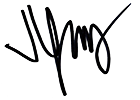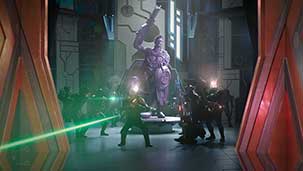What a strange thing it must be to look upon your legacy in the year 2017. The characters you imagined out of thin air – into whom you poured so much of yourself during those 14-hour days at the drafting table – are gods to us now, as much a part of our contemporary mythology as any real historical figure. In the past decade, your work has come vibrantly to life in the form of a shared cinematic universe that has generated billions of dollars and spread the gospel of the superhero across the world (and, hey, your heirs are finally getting their cut of the profits).
Which brings us to the latest manifestation of the Jack Kirby aesthetic in the global popular culture. What can be said about Thor: Ragnarok that hasn’t already been said? It’s being touted as a turning point in superhero movies; the super-comedy writ large. Director Taika Waititi is being hailed as the savior of blockbuster filmmaking, the man who brought the cold imperiousness of the “gritty reboot” back down to earth.
But the movie, which is part buddy-comedy, part Christopher Guest-style repertory act, only works because it isn’t actually a sharp left turn for the franchise—it works because it’s amplifying elements that have been there all along.
From the very beginning – yes, even the stately Shakespearian debut directed by Kenneth Branagh – the Thor series has essentially been a fish-out-water comedy. Some of the best moments in Marvel’s introductory phase came from the first Thor movie, when he was walking around naked and smashing coffee mugs on diner floors, and likewise from The Avengers, where Chris Hemsworth proved himself to be Robert Downey Jr.’s equal when it comes to comedic timing.
You were always able to tread that line well, Jack. As hyperkinetic and stylized (and revolutionary) as your artwork was, it was always fun. There was something inherently enthusiastic and optimistic about it, even when you were drawing the hellscapes of Apokolips. The costume and set design in Thor: Ragnarok isn’t just inspired by your work—it is your work. Dan Hennah and Mayes C. Rubeo took your drawings and built them in three-dimensions. From the armor worn by The Grandmaster’s palace guards to the slums of Sakaar, it is unmistakably your style. In fact, I can think of no other 20th century artist whose aesthetic is so distinct, whose design is so singular, that their work is so instantly recognizable.
The plot of Thor: Ragnarok is distinctly Kirby-esque, too. Weird, intergalactic, action-packed. There are trans-dimensional portals and gladiatorial spectacles and weird sickle-shaped spaceships and mile-high monolithic statues and strange aliens and psychedelic light shows.
You always understood how to handle the balance between preposterousness and authenticity. Even back in the four-colour days, when you and Lee and Ditko and the others were re-writing the rules of comic books, you knew that there is a necessary interplay between the darkness and the light; one cannot fully exist without the other. Which works particularly well for Thor. Because the premise of the character, by his nature, is completely absurd: a humanoid space alien mistaken for an earthly deity. And, despite our cultural appetites for grey skies and brutal violence, Marvel Studios has been smart enough to keep it more Jack Kirby than Game of Thrones. This film simply doubles down on that investment.
People can celebrate that fact that Taikia Waititi brought a comedy-first sensibility to this film (and, indeed, it’s funny—maybe the funniest movie of the year) but the grand notion of silver age comics that this film indulges in and celebrates – the anything-goes beauty of weird worlds made tangible – is your legacy. After all, the bible from which these myths spring forth was written by you.
Sincerely,

Jared







